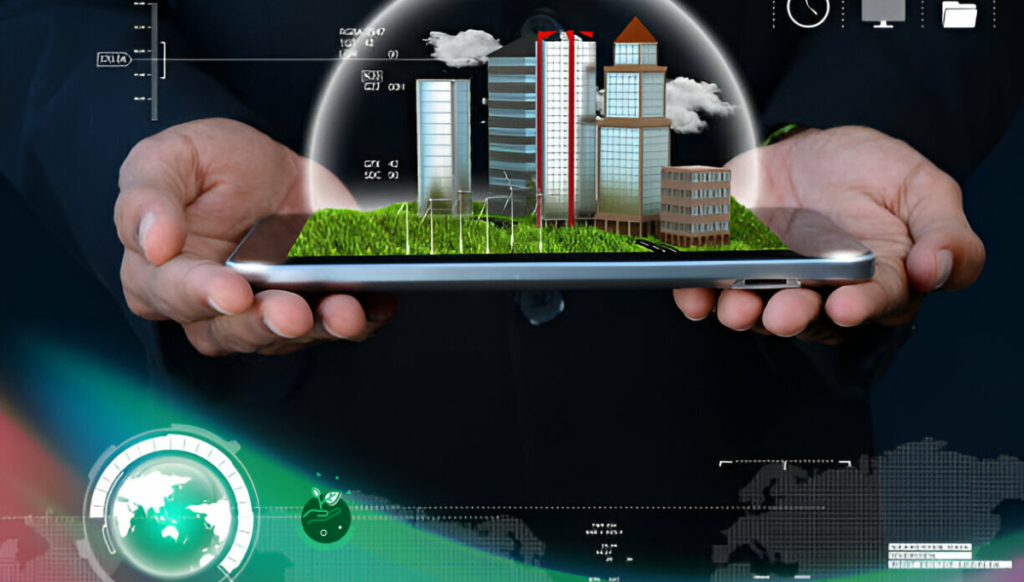Table of Contents
Have you ever wondered how investing in smart grid technology can revolutionize energy management? Yes, smart grid technology is the key to saving money on your electricity bills while reducing your carbon footprint.
By using advanced communication and automation technologies, smart grids efficiently monitor and manage energy usage. I remember when I first learned about smart grids; it was a game-changer.
Realizing how much energy we waste daily and understanding that smart grids could optimize our consumption felt like a revelation. It wasn’t just about the savings; it was about making a real difference for the planet.
In this article, we’ll delve into the benefits of smart grid technology, explaining how it can transform our energy use for a more sustainable and efficient future.
Let’s dive in.
What is Smart Grid Technology?
Smart grid technology is a modernized electrical grid system that uses advanced communication and monitoring technologies to optimize the generation, distribution, and consumption of electricity.
Unlike traditional grids, smart grids are equipped with sensors, smart meters, and digital controls that enable real-time data collection and analysis.
This allows utility companies to better manage peak demand, reduce outages, and integrate renewable energy sources like solar and wind power seamlessly.
Why Should You Care About Smart Grid Technology?
Smart grid technology offers a wide range of benefits for consumers, businesses, and the environment. By investing in smart grid infrastructure, you can:
- Reduce your energy bills by monitoring and controlling your electricity usage more effectively.
- Improve the reliability of your electricity supply by minimizing outages and disruptions.
- Decrease your carbon footprint by optimizing the use of renewable energy sources.
- Support the transition to a more sustainable and resilient energy system for future generations.
How Does Smart Grid Technology Work?
At the core of smart grid technology are two key components: smart meters and advanced metering infrastructure (AMI). Smart meters are digital devices that measure and record your electricity consumption in real-time, while AMI is a communication network that connects these meters to the utility company’s data center.
This allows for bi-directional communication between you and your utility provider, enabling features like:
- Time-of-use pricing: You can save money by adjusting your energy usage based on off-peak hours when electricity rates are lower.
- Remote monitoring: Utility companies can detect and respond to power outages faster, reducing downtime for customers.
- Demand response programs: Consumers can participate in programs that incentivize energy conservation during peak periods, helping to balance supply and demand on the grid.
How Can You Benefit from Smart Grid Technology?
As a consumer, investing in smart grid technology can help you make informed decisions about your energy usage and reduce your overall electricity costs.
By using smart home devices and energy management systems, you can track your consumption patterns, set energy-saving goals, and receive alerts when your usage exceeds certain thresholds. This empowers you to take control of your energy bill and contribute to a more sustainable energy future.
Who is Leading the Charge in Smart Grid Technology?
Countries around the world are recognizing the importance of smart grid technology in achieving their energy and climate goals.
Leading the charge in smart grid innovation are countries like the United States, Germany, Japan, and South Korea, where government initiatives and public-private partnerships are driving investment in smart grid infrastructure.
These countries are investing in projects that focus on grid modernization, renewable energy integration, and energy storage solutions to create a more resilient and adaptive energy system.
What Opportunities Exist for Investors in Smart Grid Technology?
For investors looking to capitalize on the growth of smart grid technology, there are several opportunities to consider:
- Smart grid equipment manufacturers: Companies that produce smart meters, grid sensors, and communication devices stand to benefit from increased demand for these technologies.
- Energy management software providers: Companies that develop software solutions for energy monitoring, optimization, and control are essential for enabling smart grid functionality.
- Utility companies: Traditional utility providers are investing in grid modernization projects to improve efficiency, reliability, and customer satisfaction.
- Renewable energy developers: As the deployment of solar, wind, and other renewable energy sources increases, there is a growing need for grid integration solutions to manage their variability.
By investing in these sectors, you can support the development of smart grid infrastructure and contribute to the transition to a cleaner and more sustainable energy system.
What Challenges Does Smart Grid Technology Face?
Despite its numerous benefits, smart grid technology is not without its challenges. Some of the key obstacles to its adoption include:
- High initial costs: The upfront investment required to deploy smart grid infrastructure can be substantial, limiting the pace of adoption for some utilities and consumers.
- Security and privacy concerns: The interconnected nature of smart grid systems increases the risk of cyberattacks and unauthorized access to personal data, raising concerns about data privacy and system security.
- Regulatory barriers: Regulatory frameworks vary across regions, creating uncertainty for investors and stakeholders in the smart grid space.
- Interoperability issues: The compatibility of different smart grid technologies and systems can be a barrier to seamless integration and communication between devices.
How Can These Challenges Be Addressed?
To overcome these challenges and accelerate the adoption of smart grid technology, stakeholders must work together to develop solutions that address the following issues:
- Financing mechanisms: Governments and private investors can create financial incentives, grants, and subsidies to support the deployment of smart grid projects and reduce the financial burden on utilities and consumers.
- Cybersecurity measures: Utility companies can implement robust cybersecurity protocols, encryption technologies, and access controls to protect smart grid data and infrastructure from cyber threats.
- Standardization efforts: Industry organizations and policymakers can facilitate the development of common standards and protocols for smart grid technologies to ensure interoperability and seamless communication between devices.
- Public education and engagement: Utilities can educate consumers about the benefits of smart grid technology and involve them in decision-making processes to build trust and support for smart grid initiatives.
By addressing these challenges through collaborative efforts and innovative solutions, we can overcome barriers to smart grid adoption and unlock the full potential of this transformative technology.
FAQs

What Are 3 Benefits For Smart Grid?
Smart grids offer numerous benefits, with three key advantages being enhanced energy efficiency, improved reliability, and better integration of renewable energy sources.
Enhanced energy efficiency is achieved through advanced monitoring and control systems that optimize electricity distribution, reducing waste and lowering energy costs for consumers.
This efficiency not only saves money but also conserves resources and reduces the overall environmental impact of energy production.
Improved reliability is another significant benefit of smart grids. By using real-time data and automated systems, smart grids can quickly detect and respond to outages and faults, minimizing downtime and ensuring a more stable power supply.
Additionally, smart grids facilitate the integration of renewable energy sources, such as solar and wind power, by managing their variable outputs and ensuring a balanced and sustainable energy supply.
How Much Will The Smart Grid Technology Cost?
The cost of implementing smart grid technology varies widely depending on the scale and scope of the project. For large-scale national or regional implementations, the investment can run into billions of dollars.
For example, the US Department of Energy estimated that modernizing the nation’s grid could cost upwards of $400 billion over the next two decades. This includes the cost of new infrastructure, smart meters, communication networks, and advanced control systems.
On a smaller scale, individual consumers and businesses can expect to invest in smart meters and home energy management systems, which can range from a few hundred to a few thousand dollars.
While the upfront costs can be significant, the long-term savings on energy bills and the environmental benefits often justify the investment.
Moreover, many governments and utilities offer incentives and rebates to offset some of these initial costs, making smart grid technology more accessible.
What Is The Smart Grid Investment Opportunity?
Investing in smart grid technology presents significant opportunities for investors, as the demand for more efficient and reliable energy systems continues to grow.
With governments and utilities around the world committing to modernizing their energy infrastructures, there is a substantial market for smart grid technologies and services.
Companies involved in producing smart meters, grid management software, and communication technologies stand to benefit from this trend.
Additionally, investments in smart grid technology can lead to long-term financial returns through improved energy efficiency and reduced operational costs for utilities. By optimizing electricity distribution and minimizing losses, smart grids can enhance the profitability of energy providers.
Furthermore, the integration of renewable energy sources supported by smart grids aligns with global sustainability goals, making these investments not only financially viable but also environmentally responsible.
What Is The Future Of Smart Grid Technology?
The future of smart grid technology is promising, with ongoing advancements poised to further enhance its capabilities and applications.
As technology evolves, smart grids will become even more efficient, reliable, and adaptable. Innovations in artificial intelligence and machine learning will enable predictive maintenance and real-time optimization of energy distribution, further reducing waste and improving grid performance.
Moreover, the increasing adoption of renewable energy sources will drive the need for more sophisticated smart grid solutions.
Future smart grids will be capable of seamlessly integrating various renewable energy sources, managing their intermittency, and ensuring a stable energy supply.
Additionally, advancements in battery storage technology will complement smart grids by providing backup power and smoothing out fluctuations in renewable energy generation, paving the way for a more sustainable and resilient energy future.
What Are The Opportunities In Smart Grid?
The smart grid sector offers numerous opportunities across various industries, from technology development to energy management.
One significant opportunity lies in the development and deployment of advanced metering infrastructure (AMI), which includes smart meters and communication networks.
These technologies provide real-time data on energy consumption, enabling utilities and consumers to optimize usage and reduce costs.
Another opportunity is in grid modernization projects, which involve upgrading existing infrastructure with advanced sensors, control systems, and communication technologies. These upgrades enhance grid reliability, efficiency, and resilience, creating a robust and flexible energy system.
Additionally, there are opportunities in the integration of distributed energy resources, such as rooftop solar panels and electric vehicles, into the smart grid.
This integration requires sophisticated management systems and software, creating a market for innovative solutions that can effectively balance supply and demand.
Which Software Is Used In Smart Grid?
Several types of software are used in smart grid systems, each serving a specific purpose to enhance grid management and efficiency.
Advanced Distribution Management Systems (ADMS) are crucial software platforms that provide utilities with comprehensive tools for monitoring, controlling, and optimizing the distribution grid.
ADMS integrates various data sources, such as smart meters and sensors, to improve decision-making and operational efficiency.
Another important software category is Energy Management Systems (EMS), which are used to optimize the generation and distribution of electricity.
EMS software helps balance supply and demand, integrates renewable energy sources, and enhances grid reliability. Additionally, demand response management systems (DRMS) are used to manage and respond to changes in energy demand, ensuring a stable and efficient energy supply.
These software solutions are essential components of a modern smart grid, enabling utilities to deliver reliable and sustainable energy services.
What Problem Does Smart Grid Solve?
Smart grid technology addresses several critical problems in traditional energy systems, primarily focusing on enhancing efficiency, reliability, and sustainability.
One of the key issues it solves is the inefficiency in electricity distribution. Traditional grids often suffer from significant energy losses during transmission and distribution.
Smart grids, with their advanced monitoring and control systems, optimize the flow of electricity, reducing losses and improving overall energy efficiency.
Another major problem smart grids solve is the lack of grid reliability and resilience. Traditional grids can be vulnerable to outages and faults, leading to widespread power disruptions.
Smart grids use real-time data and automated systems to quickly detect and respond to issues, minimizing downtime and enhancing grid stability.
Additionally, smart grids facilitate the integration of renewable energy sources, addressing the challenge of managing their variable outputs and ensuring a balanced and sustainable energy supply.
What Is A Smart Investor?
A smart investor is someone who makes informed and strategic decisions to maximize returns while minimizing risks. This involves thorough research, understanding market trends, and diversifying investments across different asset classes.
A smart investor is also proactive in staying updated with economic developments and adapting their investment strategies accordingly.
In the context of smart grid technology, a smart investor recognizes the potential for growth in this sector and strategically allocates funds to companies and projects that are leading the innovation in energy management and sustainability.
By investing in smart grid technology, a smart investor not only seeks financial gains but also contributes to the development of a more efficient and sustainable energy infrastructure.
Conclusion
Investing in smart grid technology is not just a smart financial decision; it is an investment in a cleaner, more efficient, and sustainable energy future.
By leveraging advanced communication and monitoring technologies, smart grids offer a wide range of benefits for consumers, businesses, and the environment.
From reducing energy bills and improving reliability to integrating renewable energy sources and supporting grid resilience, smart grid technology is shaping the way we generate, distribute, and consume electricity.
As a consumer, investor, or policymaker, you have a role to play in the adoption and advancement of smart grid technology.
By understanding its benefits and challenges, you can make informed decisions that support the transition to a more sustainable energy system.
Whether it’s adjusting your energy usage, investing in smart grid companies, or advocating for policy changes, your actions can help shape a greener and more efficient energy future for generations to come.
So, are you ready to join the smart grid revolution and invest in a brighter energy future? The choice is yours.



